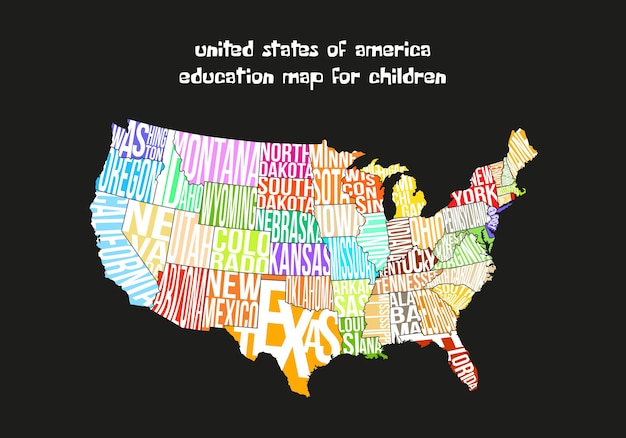Paid Family Leave: Understanding Federal and State Laws in the US

Paid Family Leave (PFL) in the US involves a complex framework of state and federal laws designed to provide eligible employees with paid time off for specific family and medical reasons, ensuring job protection and income support during critical life events.
Navigating the landscape of Paid Family Leave: Navigating the Complexities of State and Federal Laws in the United States can be challenging for both employers and employees. Understanding the intricacies of these laws is essential for ensuring compliance and accessing the benefits you’re entitled to.
Understanding the Basics of Paid Family Leave
Paid Family Leave (PFL) is a crucial benefit that provides employees with paid time off to care for themselves or a family member experiencing a significant life event. This encompasses situations such as new child care, recovering from a serious illness, or caring for a sick relative.
Knowing the fundamentals of PFL is the first step toward understanding how it can support you or your employees. Let’s delve into the core aspects of PFL, setting the stage for navigating the complexities ahead.
What is Paid Family Leave?
Paid Family Leave provides wage replacement benefits to employees who need to take time off work for qualifying family or medical reasons. These benefits are designed to alleviate financial stress during periods when employees are unable to work due to these circumstances.
Federal vs. State Laws
In the US, paid family leave is governed by a combination of federal and state laws. The federal Family and Medical Leave Act (FMLA) provides unpaid, job-protected leave, while state laws offer paid leave benefits. This dual system can lead to confusion, but understanding the differences is key.

Here are the key differences between federal and state laws:
- FMLA: Federal law providing unpaid, job-protected leave for eligible employees for up to 12 weeks.
- State PFL: State laws offering paid leave benefits, with varying eligibility requirements and benefit durations.
- Eligibility: FMLA has specific employer size and employee tenure requirements, while state PFL may have different criteria.
- Coordination: State PFL often runs concurrently with FMLA, providing wage replacement during FMLA leave.
In summary, Paid Family Leave is essential for ensuring that employees can balance their work and personal lives without facing financial hardship. By understanding the basics of PFL, individuals and businesses can navigate the system effectively.
Current Federal Laws and Regulations
At the federal level, the primary legislation addressing family and medical leave is the Family and Medical Leave Act (FMLA). While FMLA doesn’t mandate paid leave, it provides crucial job protection for eligible employees needing time off for specific reasons.
Understanding the FMLA and its implications is vital for both employers and employees. Let’s explore the key provisions, eligibility criteria, and how FMLA interacts with state PFL laws.
The Family and Medical Leave Act (FMLA)
The FMLA, enacted in 1993, entitles eligible employees of covered employers to take unpaid, job-protected leave for specified family and medical reasons with continuation of group health insurance coverage under the same terms and conditions as if the employee had not taken leave.
Here’s what you need to know about FMLA:
- Eligibility: Employees must have worked for at least 12 months by the start of the leave and at least 1,250 hours over the past 12 months.
- Covered Employers: FMLA applies to all public agencies, including state, local, and federal employers, local education agencies, and private sector employers who employ 50 or more employees for at least 20 workweeks in the current or preceding calendar year.
- Qualifying Reasons: Includes the birth and care of a newborn child, placement of a child for adoption or foster care, care for an immediate family member with a serious health condition, or the employee’s own serious health condition.
Interaction with State PFL Laws
Many states have enacted their own paid family leave laws, which often run concurrently with FMLA. This allows employees to receive wage replacement benefits while also maintaining job protection under FMLA.
The interaction between federal and state laws ensures comprehensive support for employees during critical times. Understanding how these laws work together can help you navigate the complexities of family and medical leave.
In conclusion, understanding the FMLA is essential for employers and employees in the US. While it does not provide paid leave, it offers critical job protection that complements state-level PFL programs.
An Overview of State-Level Paid Family Leave Programs
Several states have taken the initiative to implement their own paid family leave programs, providing wage replacement benefits to eligible employees. These programs vary in terms of eligibility, benefit levels, and covered reasons for leave.
Exploring these state-level programs is crucial for understanding the full scope of paid family leave in the US. Let’s dive into some of the key state PFL programs and their unique characteristics.
Key State PFL Programs
Currently, several states have established PFL programs, each with its own set of rules and regulations. These states include California, New Jersey, New York, Rhode Island, Massachusetts, Washington, Connecticut, Oregon, Colorado, Maryland, Delaware and the District of Columbia.

Here are some highlights of these state programs:
- California: Offers up to eight weeks of paid leave for family caregiving, bonding with a new child, or the employee’s own serious health condition.
- New Jersey: Provides benefits for bonding with a new child, caring for a sick family member, or the employee’s own disability.
- New York: Offers paid leave for bonding with a new child, caring for a sick family member, or for military family events. Gradually increasing benefit levels each year.
Eligibility and Benefits
Eligibility requirements and benefit levels vary widely among state PFL programs. Generally, employees must meet certain minimum earnings or hours worked requirements to qualify.
Benefits are typically calculated as a percentage of the employee’s average weekly wage, subject to a maximum weekly benefit amount. The duration of benefits also varies, with most states offering several weeks of paid leave.
In summary, state-level PFL programs play a crucial role in providing paid leave benefits to employees in the US. By understanding the specifics of these programs, employees and employers can navigate the complexities of paid family leave more effectively.
Eligibility Requirements for Paid Family Leave
Eligibility for paid family leave varies depending on both the federal and state regulations in place. Understanding these requirements is crucial for employees who wish to access these benefits and for employers who need to administer them correctly.
Let’s explore the various factors that determine eligibility for PFL, including employment status, qualifying events, and documentation requirements.
Employment Status
Generally, to be eligible for PFL, an employee must be employed by a covered employer and meet certain tenure and hours worked requirements. These requirements can vary significantly between federal and state laws.
For example:
- FMLA: Requires employees to have worked for at least 12 months and 1,250 hours in the past year.
- State PFL: Often have different minimum earnings or hours worked requirements, which may be more lenient than FMLA.
Qualifying Events
PFL is designed to provide benefits for specific qualifying events, such as:
Qualifying events are:
- Birth or Adoption: Bonding with a new child.
- Serious Health Condition: Caring for oneself or a family member with a serious health condition.
- Military Family Leave: Addressing needs arising from a family member’s military service.
Documentation and Application Process
To receive PFL benefits, employees typically need to provide documentation to support their claim. This may include medical certifications, proof of relationship, or other relevant documents.
The application process usually involves submitting a claim form to the state agency responsible for administering the PFL program. It’s essential to follow the instructions carefully and provide all required information to avoid delays in processing your claim.
In conclusion, understanding the eligibility requirements for PFL is essential for accessing these benefits. By familiarizing yourself with the federal and state regulations, you can ensure that you meet the criteria and can navigate the application process smoothly.
How to Apply for Paid Family Leave
Applying for Paid Family Leave (PFL) can be a straightforward process if you understand the steps involved and have the necessary documentation. The process typically involves gathering required documents, completing an application form, and submitting it to the relevant state agency.
Let’s walk through the process of applying for PFL, providing guidance on how to navigate each step effectively.
Gathering Required Documents
Before you begin your application, gather all the necessary documents to support your claim. These documents may include:
You will need to provide:
- Medical Certification: A statement from a healthcare provider certifying the medical condition of yourself or your family member.
- Proof of Relationship: Documents proving your relationship to the family member you are caring for.
- Employment Verification: Information about your employment, such as pay stubs or employment contracts.
Completing the Application Form
The application form for PFL typically requires detailed information about yourself, your employer, and the reason for your leave. Be sure to fill out the form accurately and completely.
Double-check all the information before submitting the application to avoid any potential delays.
Submitting Your Application
Once you have completed the application form and gathered all the required documents, submit your application to the state agency responsible for administering the PFL program.
Follow up with the agency to check on the status of your application and address any questions or concerns they may have. Staying proactive can help ensure a smoother and faster approval process.
In summary, applying for PFL involves gathering documents, completing an application, and submitting it to the relevant state agency. By following these steps and staying organized, you can navigate the application process effectively and access the benefits you need.
Challenges and Future Trends in Paid Family Leave
Despite the growing momentum behind paid family leave, several challenges remain, including funding, program sustainability, and equity in access. Additionally, the future of PFL may see further expansion and standardization across states.
Let’s examine some of the challenges and future trends in paid family leave, providing insights into the evolving landscape.
Funding and Sustainability
One of the main challenges of PFL programs is ensuring their long-term financial sustainability. Most PFL programs are funded through payroll taxes, but maintaining adequate funding levels requires careful planning and adjustments.
Finding sustainable funding models is crucial for ensuring that PFL programs can continue to provide benefits to eligible employees for years to come.
Equity and Access
Another challenge is ensuring equitable access to PFL benefits across different demographic groups. Low-wage workers, part-time employees, and those working for small businesses may face barriers to accessing PFL.
Efforts to address these disparities are essential for making PFL truly inclusive and beneficial for all workers.
Future Trends
The future of PFL may see further expansion and standardization of programs across states. There may also be efforts to establish a federal PFL program to provide a uniform standard of benefits nationwide.
As awareness of the benefits of PFL grows, we can expect continued advocacy and innovation in this area.
In conclusion, while paid family leave faces certain challenges, its future looks promising as more states and potentially the federal government consider expanding and standardizing these programs. Addressing issues of funding, equity, and access will be essential for realizing the full potential of paid family leave.
| Key Aspect | Brief Description |
|---|---|
| ✅ Definition | PFL provides paid time off for employees to care for family or medical needs. |
| 📜 Federal vs. State | FMLA offers unpaid, job-protected leave; state laws provide paid benefits with varying rules. |
| 💼 Eligibility | Requirements vary by state, often related to tenure and hours worked. |
| 💸 Application | Involves gathering documents, completing forms, and submitting to a state agency. |
Frequently Asked Questions
▼
Paid Family Leave aims to provide wage replacement and job security to employees who need to take time off for qualifying family or medical reasons, ensuring financial stability during critical periods.
▼
FMLA is a federal law that offers unpaid, job-protected leave, while state PFL programs provide paid leave benefits. State programs vary in eligibility and coverage compared to FMLA.
▼
As of now, states such as California, New Jersey, New York, Rhode Island, Massachusetts, Washington, Connecticut, Oregon, Colorado, Maryland, Delaware and the District of Columbia have PFL programs.
▼
Qualifying events typically include the birth or adoption of a child, caring for a family member with a serious health condition, or addressing needs arising from a family member’s military service.
▼
Applying for PFL generally involves gathering required documents (like medical certifications), filling out an application form, and submitting it to the state agency that manages the program.
Conclusion
Navigating the complexities of Paid Family Leave requires a thorough understanding of both federal and state laws. By staying informed and proactive, employers and employees can effectively manage and utilize PFL benefits, ensuring compliance and support during crucial times.





